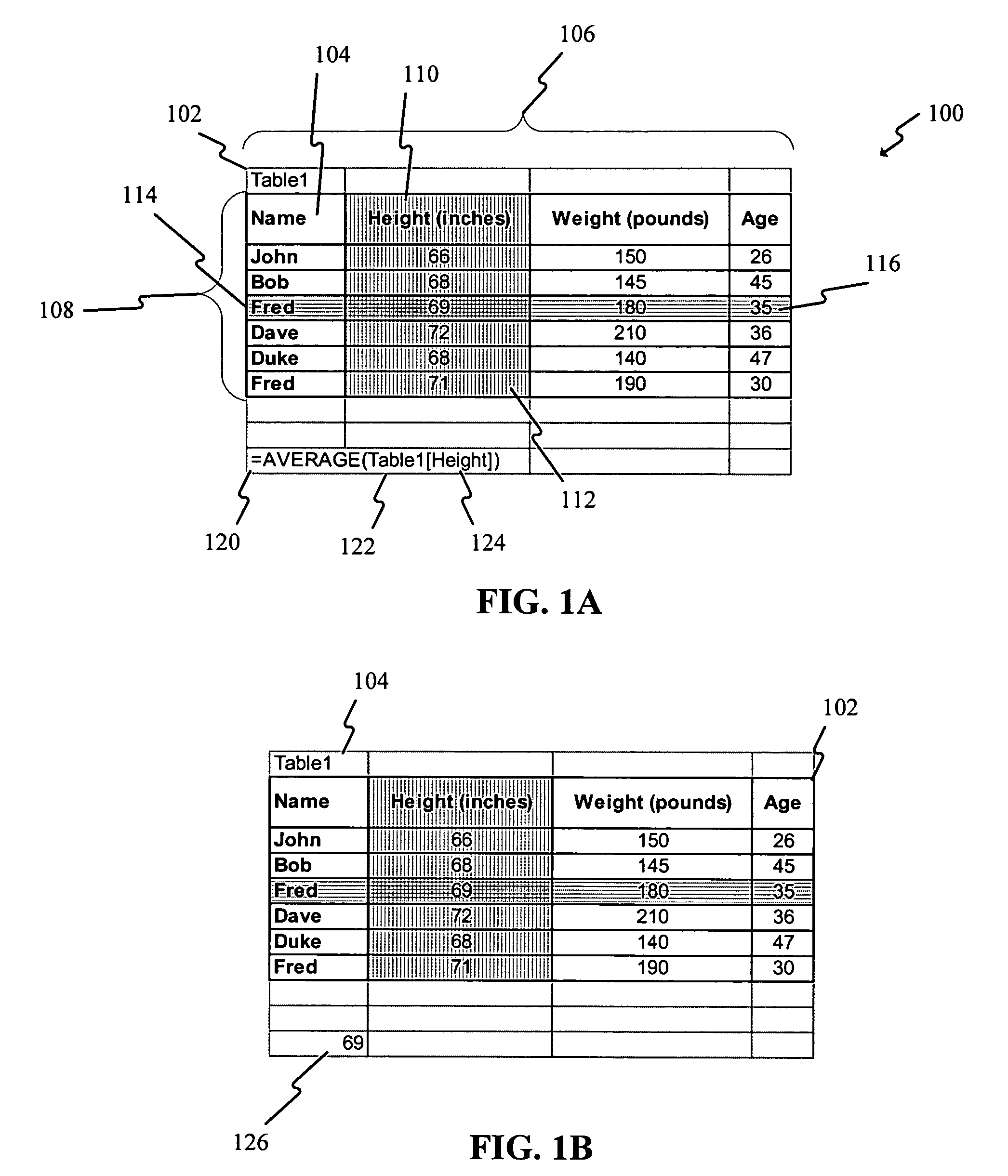Method and implementation for referencing of dynamic data within spreadsheet formulas
a dynamic data and spreadsheet formula technology, applied in the field of spreadsheet software or applications, can solve the problems of inability to adjust the designations of the above methods to include added data, and the current spreadsheet application has some significant drawbacks
- Summary
- Abstract
- Description
- Claims
- Application Information
AI Technical Summary
Benefits of technology
Problems solved by technology
Method used
Image
Examples
Embodiment Construction
[0043] The present invention will now be described more fully hereinafter with reference to the accompanying drawings, in which embodiments of the invention are shown. This invention may however, be embodied in many different forms and should not be construed as limited to the embodiments set forth herein. Rather, these embodiments are provided and discussed in detail so that this disclosure will be thorough and complete and will fully convey the scope of the invention to those skilled in the art.
[0044] In general, embodiments of the present invention relate to a structured name syntax within spreadsheet programs that references data based on context instead of cell coordinates (i.e. “C6” or “D3:D12”) or indices, yet is still a reference, as opposed to a function. Embodiments of the invention comprise the new structural reference for referring to an item of data, methods for creating the structural reference, and methods for implementing the structural reference.
[0045] The inventi...
PUM
 Login to View More
Login to View More Abstract
Description
Claims
Application Information
 Login to View More
Login to View More - R&D
- Intellectual Property
- Life Sciences
- Materials
- Tech Scout
- Unparalleled Data Quality
- Higher Quality Content
- 60% Fewer Hallucinations
Browse by: Latest US Patents, China's latest patents, Technical Efficacy Thesaurus, Application Domain, Technology Topic, Popular Technical Reports.
© 2025 PatSnap. All rights reserved.Legal|Privacy policy|Modern Slavery Act Transparency Statement|Sitemap|About US| Contact US: help@patsnap.com



